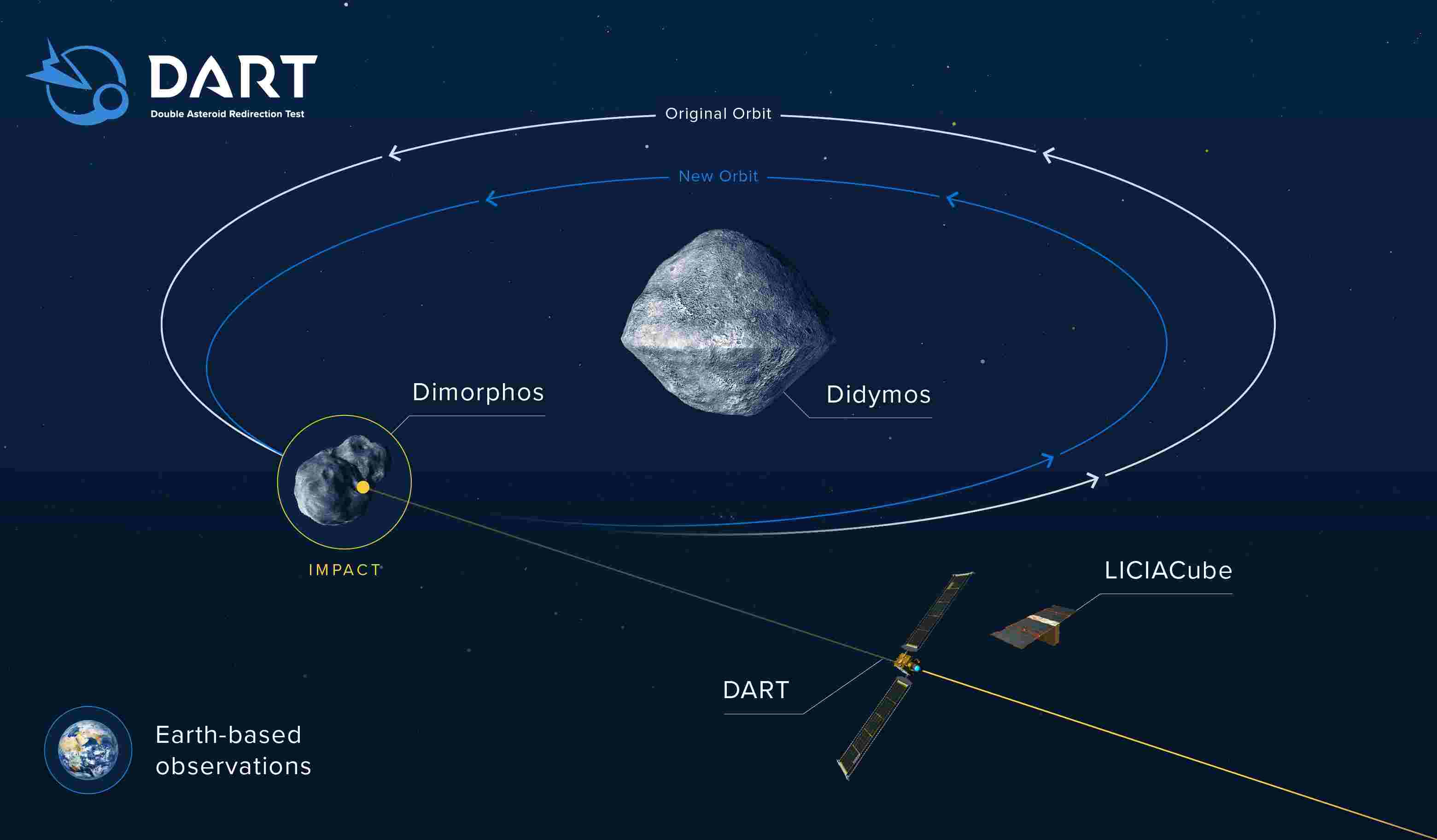NASA DART: Launched on November 23, 2021, NASA’s DART (Double Asteroid Redirection Test) mission probe, the first of its kind, is on a suicide mission to save the planet.
On September 26, the spacecraft will collide with an asteroid while travelling at a speed of 24,000 kilometers per hour.
The DART mission aims to alter an asteroid's orbit through kinetic impact.
The target asteroid is the tiny moonlet Dimorphos of the Didymos binary asteroid system.
The asteroid has a diameter of 160 meters (525 feet) (bigger than the World Trade Center). It was discovered by Joe Montani, a member of the University of Arizona's Spacewatch Project, in 1996.

Source: NASA
Why Is The DART Satellite Crashing Into The Asteroid?
Millions of years ago, an asteroid wiped out the entire population of dinosaurs. NASA’s DART was launched to prevent a repeat of what occurred all those million years ago. If the mission is successful in diverting the asteroid’s orbit, it will give us a fighting chance to survive if any deadly asteroid is headed toward Earth in the near future.
In 3⃣ days the #DARTMission spacecraft will intentionally crash into a small asteroid moonlet. DART is @NASA’s first #planetarydefense test.
— NASA Asteroid Watch (@AsteroidWatch) September 23, 2022
Watch the DART Impact LIVE on Sep 26, starting at 6pm ET. :arrow_forward: :arrow_right: https://t.co/CRmd7X4Ku1@NASASolarSystem @JHUAPL pic.twitter.com/XggivRfMyq
“The Didymos system is an eclipsing binary as viewed from Earth, meaning that Dimorphos passes in front of and behind Didymos as it orbits the larger asteroid as seen from Earth. Consequently, Earth-based telescopes can measure the regular variation in brightness of the combined Didymos system to determine the orbit of Dimorphos. After the impact, this same technique will reveal the change in the orbit of Dimoprhos by comparison to measurements prior to impact. The timing of the DART impact in September 2022 was chosen to be when the distance between Earth and Didymos is minimized, to enable the highest quality telescopic observations,” said NASA.
According to NASA, it is not a threat to Earth, neither before nor after the collision.
The asteroid wouldn't be destroyed by the hit collision. An estimated 1 million kilograms of rocks and soil would be sent into space as a result of the collision, and the asteroid's orbit will be altered.
Also Read | What Is NASA’s DART Mission? NASA’s Attempt To Safeguard Earth From An Asteroid
When And Where To Watch The Live Crash Of The DART Spacecraft?
NASA will broadcast live coverage of DART's collision with the asteroid Dimorphos on NASA TV on Monday, September 26 at 6 p.m. Also, the live crash can be seen live on NASA’s social media accounts.
All hopes of protecting the Earth from an asteroid collision threat in the near future are dependent on the anticipated NASA’s DART spacecraft crash.
Comments
All Comments (0)
Join the conversation